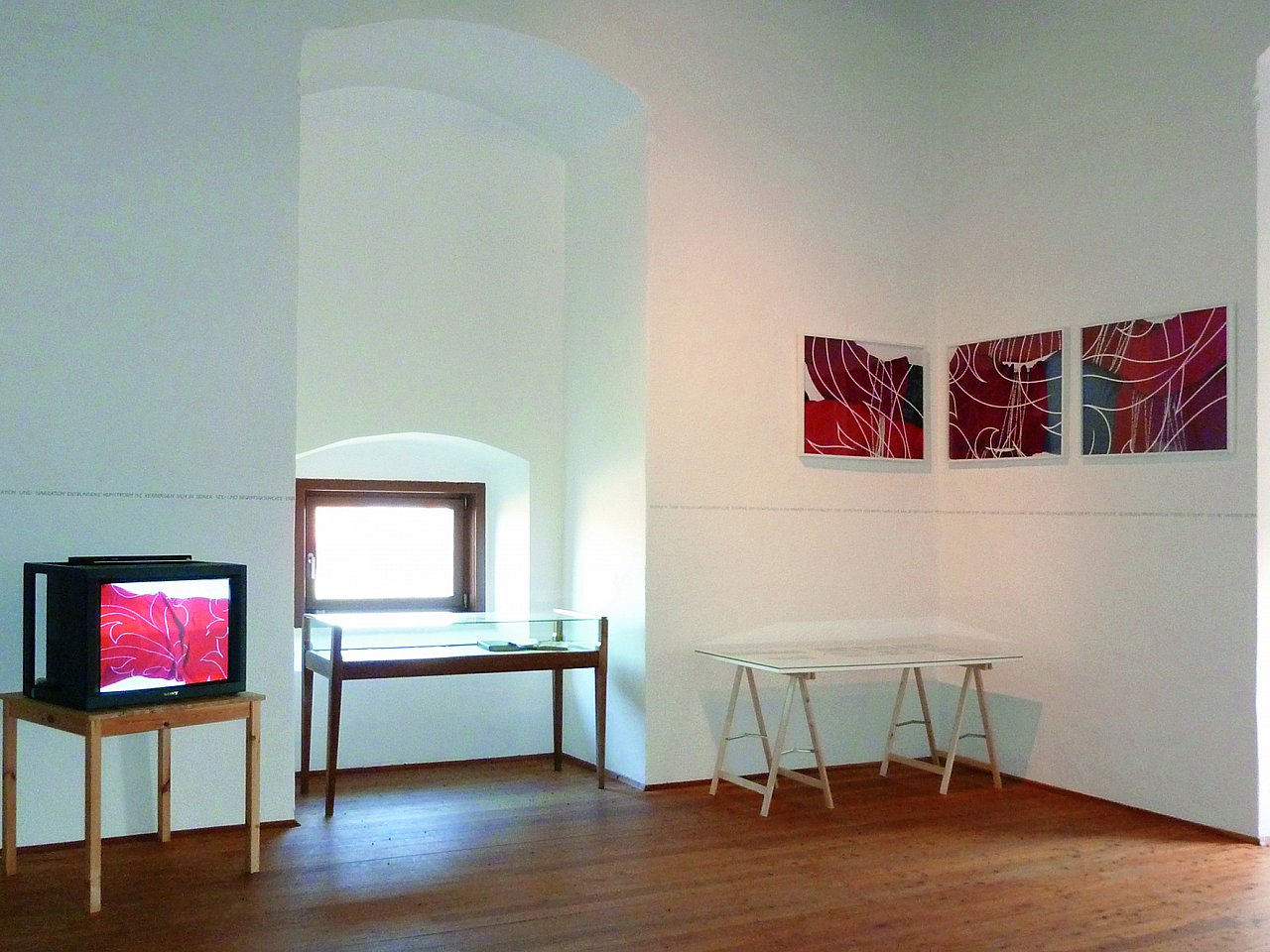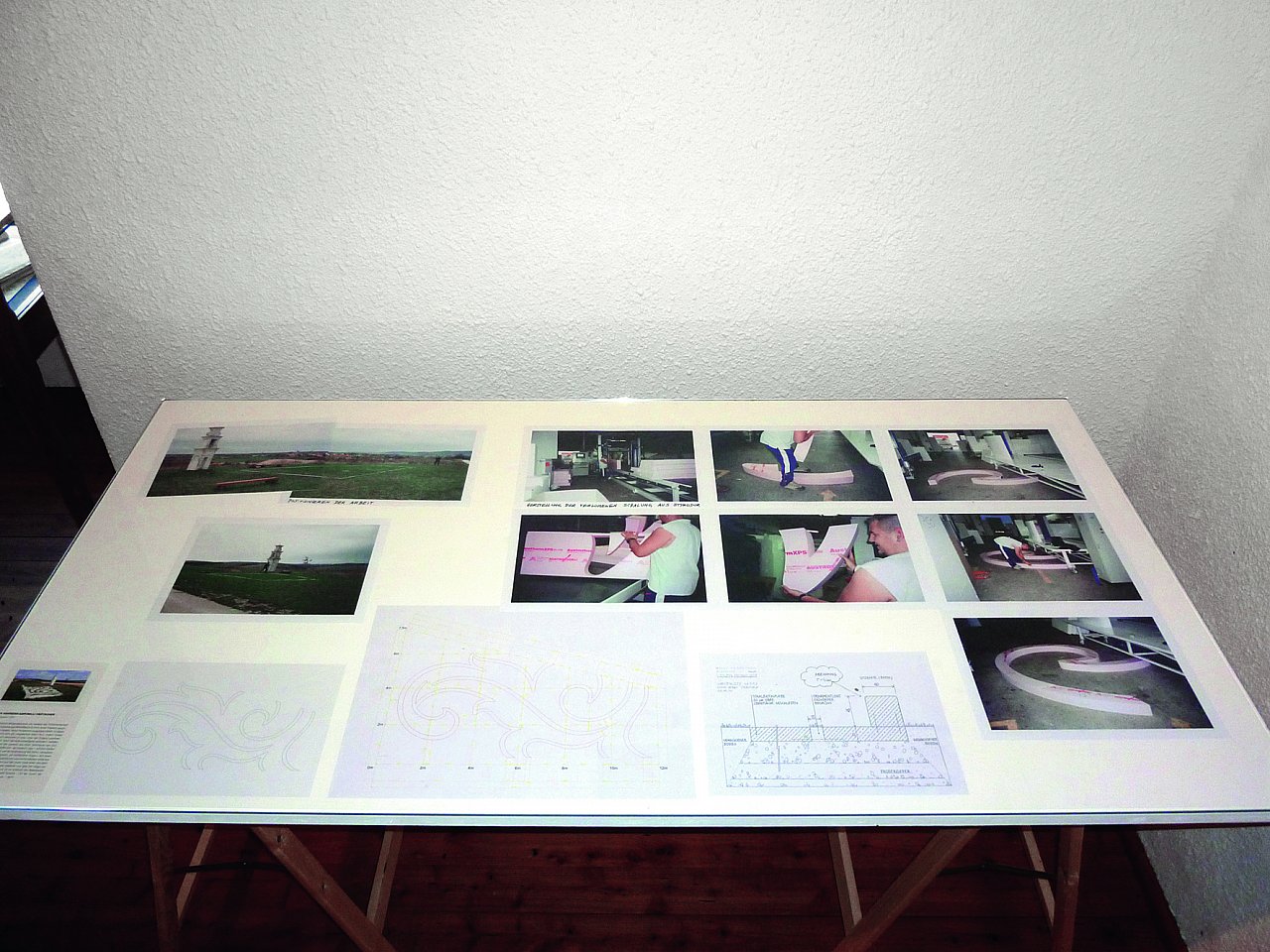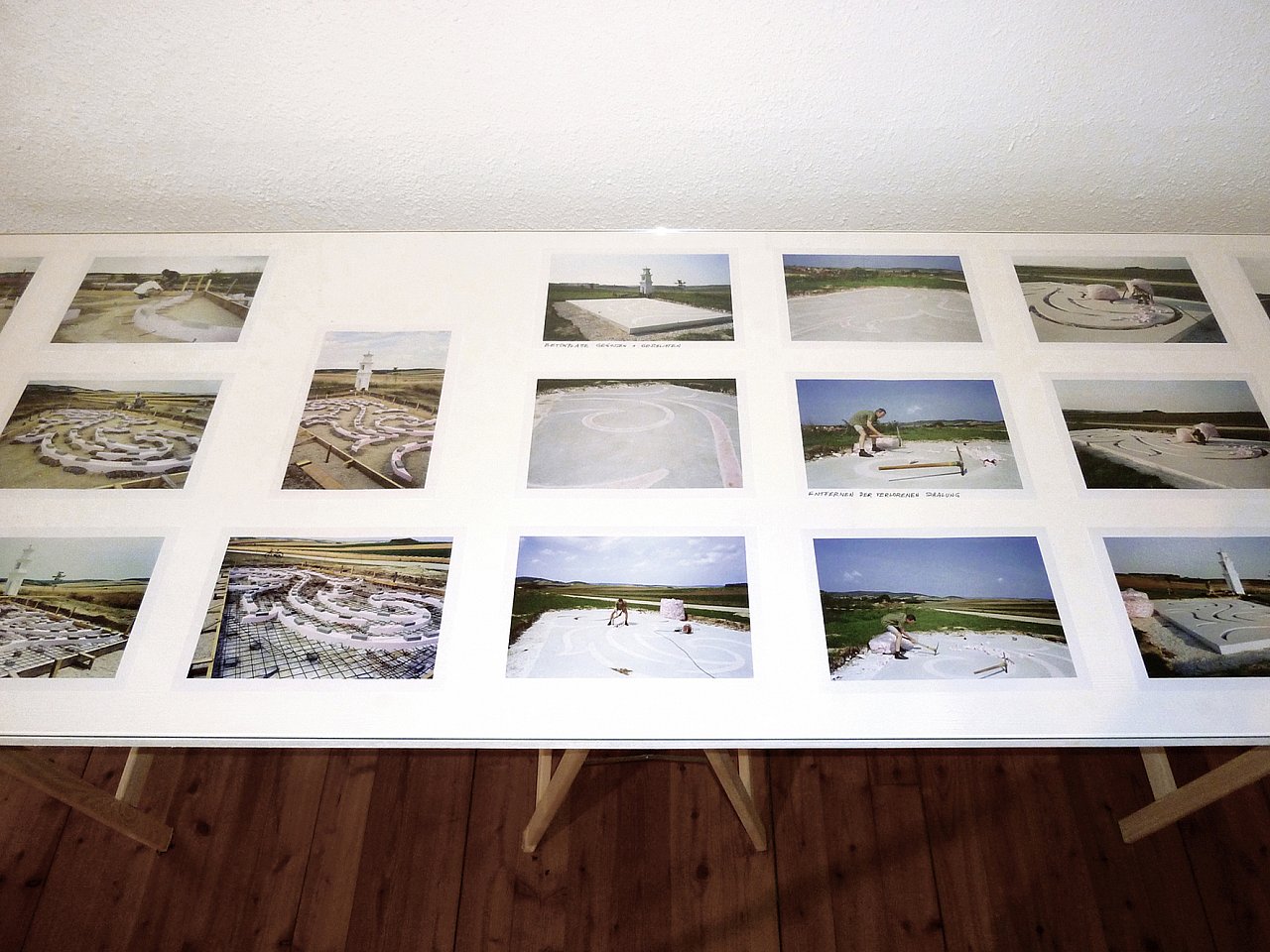Ornamentfragment
Maria Hahnenkamp & Willi Frötschl
Maria Hahnenkamp & Willi Frötschl
Exhibiton Series
Alltagskultur und Gegenwartskunst im museumORTH
curated by Hilde Fuchs
2011 May 21 to November 1
Maria Hahnenkamp & Willi Frötscher present the working process of "Ornamentfragment", which was completed in 2000 around Paasdorf. This work incorporates a historical wayside shrine to create a scenario that can also be enjoyed by visitors while resting on a cast concrete bench on the sculpture's side.
Various artists have carried out different interventions in the public space in and around Paasdorf by engaging with the idea of cultivated nature. Their efforts help to shape the Kulturlandschaft Paasdorf as an area structured by diverse forms of presentation. This cultural landscape is also the location of Ornamentfragment (Ornament Fragment), a concrete trapezoid created by Maria Hahnenkamp and Willi Frötscher that allows the meadow's vegetation to grow through the cuts in its surface. Completed in 2000, this work incorporates a historical wayside shrine to create a scenario that can also be enjoyed by visitors while resting on a cast concrete bench on the sculpture's side.
The starting point for this work was the artists' engagement with ornaments as a form of human artistic expression. They were inspired by many floral ornamental templates from the time around 1860, when a competition was held for creating a new ornamental design for the entire Vienna Court Opera (today Vienna State Opera). The opera's architects Van der Nüll and Sicardsburg noted as early as 1845 that "the main reason for all decorations is the human need to lend meaning to form while also satisfying a sense of beauty." However, Modernism looked down on ornamentation, and indeed the Modernist Adolf Loos argued in his pamphlet "Ornament und Verbrechen" (Ornament and Crime) in 1908 that this need for decoration should be prohibited.
In their documentation of the Ornamentfragment in Paasdorf, presented in the museumORTH, Maria Hahnenkamp and Willi Frötscher articulate their own approach to these traditional, formal traces of civilization. The project's development is shown in stages leading up to the finished sculpture. It is a process that illustrates the project's growth while pointing at its continued existence in the years to come.
(Hilde Fuchs)




